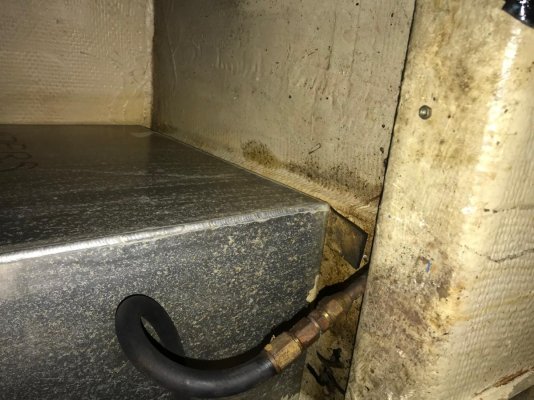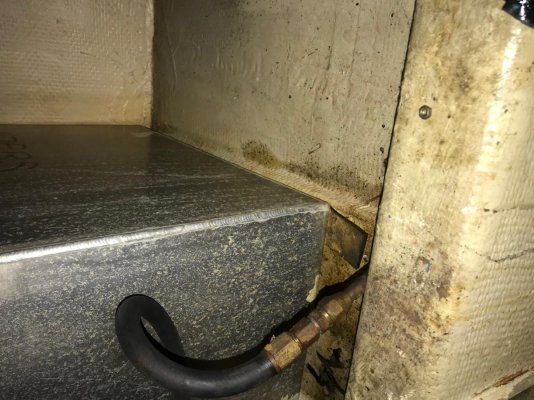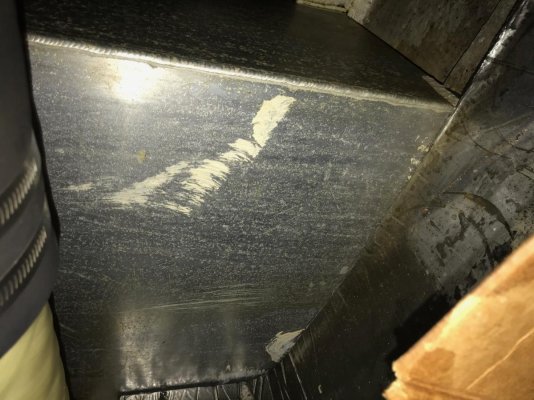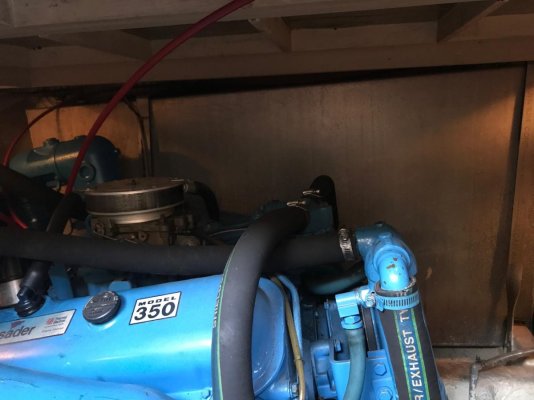Takoradi
Senior Member
I have an '84 Uniflite 42 with twin Crusaders. The factory manual says that she has 350 gallon fuel capacity in 3 tanks, aft, port, & starboard. After crawling around the engine room for a few hours yesterday and measuring the 2 main tanks, she appears to have a much larger capacity. Without even including the aft tank which is much smaller than the others, it appears I have 250 gallons in each side tank which puts me over 500 gallon capacity. They are aluminum and angled at the bottom to match the hull and I measured 3 times.
The outboard tanks are 60" long, 32" wide, 33" tall on the taller inboard side and 27" tall on the shorter outboard side. I calculated 57,600 cubic inches volume, divided that by 231 cubic inches per gallon of gas and got 249.4 gallons.
This boat was built to spec by the original owner I purchased from so perhaps he had larger tanks installed but I'd think that would be reflected in the hand written capacities in the manual.
Questions:
1 Would someone please check my volume calculations?
2 Do any other '80's Uniflite gasser owners have an accurate fuel tank capacity measurement and/or have gone thru the same exercise?
Thanks for the help,
Tak
Pics are the spec sheet and a couple of the tanks. Hard to see the angled bottom but they're there. All the pics but the bottom one are rotated 90 degrees counterclockwise.
The outboard tanks are 60" long, 32" wide, 33" tall on the taller inboard side and 27" tall on the shorter outboard side. I calculated 57,600 cubic inches volume, divided that by 231 cubic inches per gallon of gas and got 249.4 gallons.
This boat was built to spec by the original owner I purchased from so perhaps he had larger tanks installed but I'd think that would be reflected in the hand written capacities in the manual.
Questions:
1 Would someone please check my volume calculations?
2 Do any other '80's Uniflite gasser owners have an accurate fuel tank capacity measurement and/or have gone thru the same exercise?
Thanks for the help,
Tak
Pics are the spec sheet and a couple of the tanks. Hard to see the angled bottom but they're there. All the pics but the bottom one are rotated 90 degrees counterclockwise.
Attachments
Last edited:




